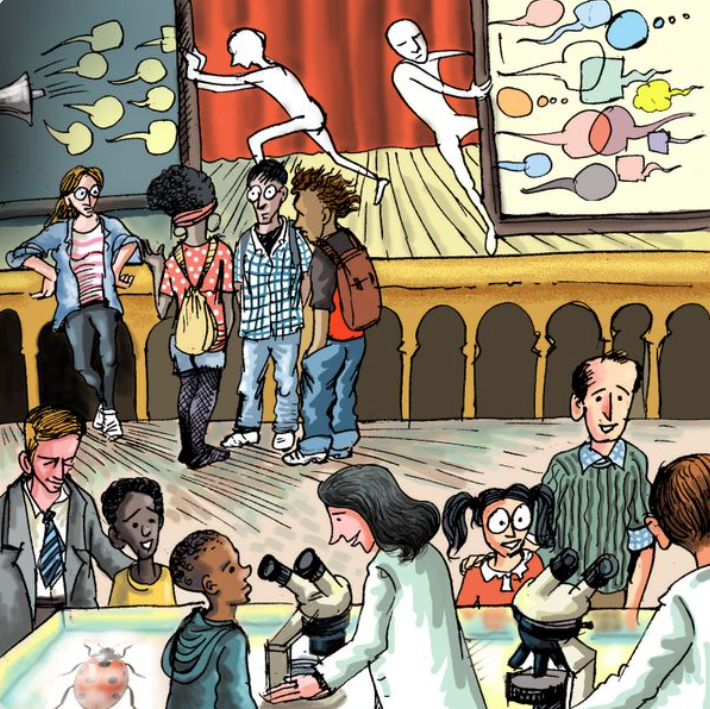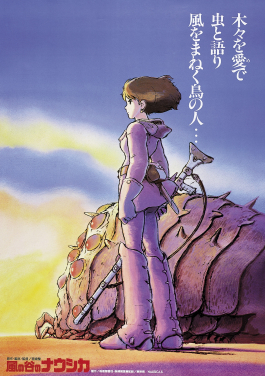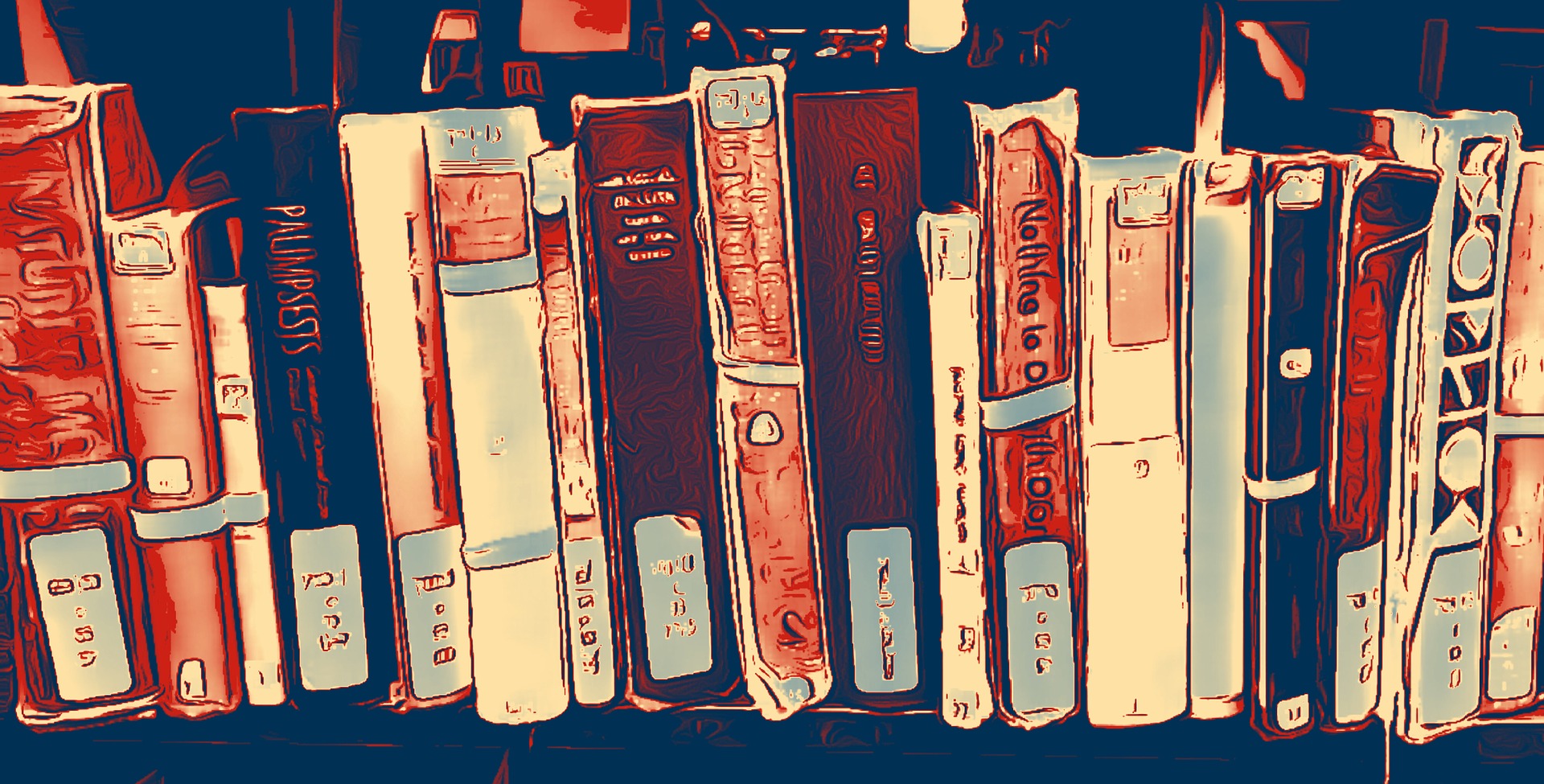
Photo credit: Illustration by Argha Manna from Lifeology course An Inclusive History of Science Communication
There is growing awareness about the role of science communication in diversifying and decolonising science. But what about the need for diversifying and decolonising our understanding of science communication itself, and its history?
The practice, research and teaching of science communication today continues to be dominated by Eurocentric, Anglophone and heteronormative paradigms. There is an urgent need for decolonising our understanding of science communication by acknowledging, embracing and celebrating the wide diversity of knowledge sharing approaches employed by people across time, cultures and continents.
For Lifeology’s September’s SciComm challenge, participants shared lesser-known examples of any historical or contemporary SciComm activity, format or story from their own culture, community or experiences.
The Task: Tell us about an example of SciComm in some detail or tell us its story. Who performed this SciComm activity? Who was the target audience? What form or format was used? What type of scientific or natural knowledge was communicated – and what was the impact? Are there or were there any deeper cultural or historical contexts surrounding this SciComm activity and its format, platform, style or approaches? How has this SciComm activity informed your own work, or impacted or motivated you?
This SciComm challenge coincided with the release of the Lifeology SciComm program course “An Inclusive History of Science Communication“.
This SciComm Challenge was also developed in part to provide examples and discussion for a roundtable at the 2021 Inclusive SciComm Symposium on the topic of decolonising science and our understanding of the history of science communication. The roundtable panel discussion featuring Lifeology course Siddharth Kankaria and illustrator Argha Manna as well as our co-founder Paige Jarreau and others is scheduled for October 14th at 2:30pm ET. Register now to watch live or access a recording!
Attendees will have an opportunity to share their favorite science communication examples from their local cultures, contexts and countries!
Panelists:
1. Dr. Elizabeth Rasekoala (African Gong) – Gender, STEM education & decolonisation scholar
2. Dr. Amelia Bonea (University of Heidelberg) – Historian of science and colonial India
3. Argha Manna (Drawing History of Science) – Visual illustrator studying the history of science
Moderators/ Session Facilitators:
1. Dr. Paige Jarreau (Lifeology) – VP of Science Communication at LifeOmic
2. Siddharth Kankaria (NCBS Bangalore) – Science communication practitioner & researcher
Continue reading to learn more about examples of SciComm shared by some of our Lifeology community members for the September SciComm challenge.

Photo credit: Illustration by Argha Manna from Lifeology course An Inclusive History of Science Communication
The Submissions:
I really like how a female scientist is presented in a Ghibli movie, Nausicaa of the Valley of the Wind. Nausicaa is the protagonist princess scientist – I know, this sounds so absurd, but it’s a beautiful movie – who studies water pollution in her secret basement lab. She uses her findings to try to convince people that pollution is devastating the nature around them, which in turn is ruining their lives.

I spent some years growing up in Japan and so I watched Ghibli and Disney movies alike. This is my favorite movie and I didn’t really reflect on how it might have influenced me until more recently, but I think that growing up with her encouraged me to pursue science from a young age (one of my earliest dreams was to become a scientist). Since the movie is only loosely tied to science, it probably falls into more science-inspirational art than SciComm or SciArt. – Julia Licholai
My first exposure to SciComm was through Humanology Project. I joined The Humanology Project when I was an undergraduate student because I was inspired by how their focus was on destigmatizing mental illnesses through story-telling and making the science behind mental illnesses more accessible to everyone. I became a writer for them at Ethos News and later became an editor as well. –Yasharah Raza
One example of science communication that impacted me early on was the work of Helen Storey – a fashion genius who partnered with a polymer chemist in the UK to design a dress that could clean the air. The idea grabbed me so much that I wrote a story about it here. To me, this was one of the first examples of science communication in a very different format – fashion and clothing design and live art – that made me realize that science doesn’t always have to be communicated in traditional text-based formats. – Paige Jarreau

Photo credit: Pixabay.com
This is such a lovely SciComm challenge! For me, what opened my eyes to science communication was reading the excellent popular science book “Phantoms in the Brain” by VS Ramachandran. I remember being so awed by how simply he explained some of the most complex topics in neuroscience while inculcating in the reader a fascination for the way the brain works. I’ve since gone on to read a number of popular science books, and have always come out of the experience richer and more inspired to write beautifully about complex science topics! –Aditi Subramaniam
My first encounter with SciComm was when I was a kid. It was an advertisement on the importance of immunization and vaccination for the kids to prevent measles, mumps and other related diseases. So basically that advertisement was a short film raising awareness. It had the injection named as “Teeko” because in Urdu we call injection as “Teeka”. They telecasted how the kid and “Teeko” were best friends. “Teeko” could even talk to the kid. One day when the kid got sick, “Teeko” being the best buddy came to the rescue and when it was injected, it helped the child recover. A little funny story but that was the need of the time to urge parents to get their children vaccinated. –Aimen Arshad
Way back in my high school days I participated in the annual Indian National Children’s Congress (still runs to date), a community-centered research project competition organized annually by the government of India. Briefly, student groups build a team, identify relevant, community-centered, local socio-scientific problems, find mentors and community members to help run surveys, experiments, analysis, etc., follow the process of the research cycle and come up with easily implementable solutions/recommendations. They then get to present this work in various communication formats at local, state and national levels.
The experience of participating in the Indian National Children’s Congress certainly shaped and influenced my life decisions over all these decades. Through that experience I first realized the power of doing research and that I wanted to be a researcher. I also figured out that I worked best working in teams and cared even more about the ‘comms and engagement’ part than the ‘science’ part! I found my love of explaining things about my research to other people. Most importantly, it showed me that research is accessible even with frugal means and is reachable even for little school kids like us with no great scientific backgrounds or mentoring. It also showed me that research can help solve societal problems. Further, it gave me one of the first opportunities to translate my research into various formats – public talks, design posters and flyers and written report writing for various audiences with varied levels of interest and understanding!
Looking back, it was also just incredible to see the diverse representation of student groups coming from >20 states with different languages, stories, ideas and experiences sharing under the same umbrella of National Children’s Congress. –Manasi Apte
Have an example to share? You can still share it by e-mailing Lifeology@lifeomic.com, or sharing it during our upcoming roundtable at the Inclusive SciComm Sympoisum!




